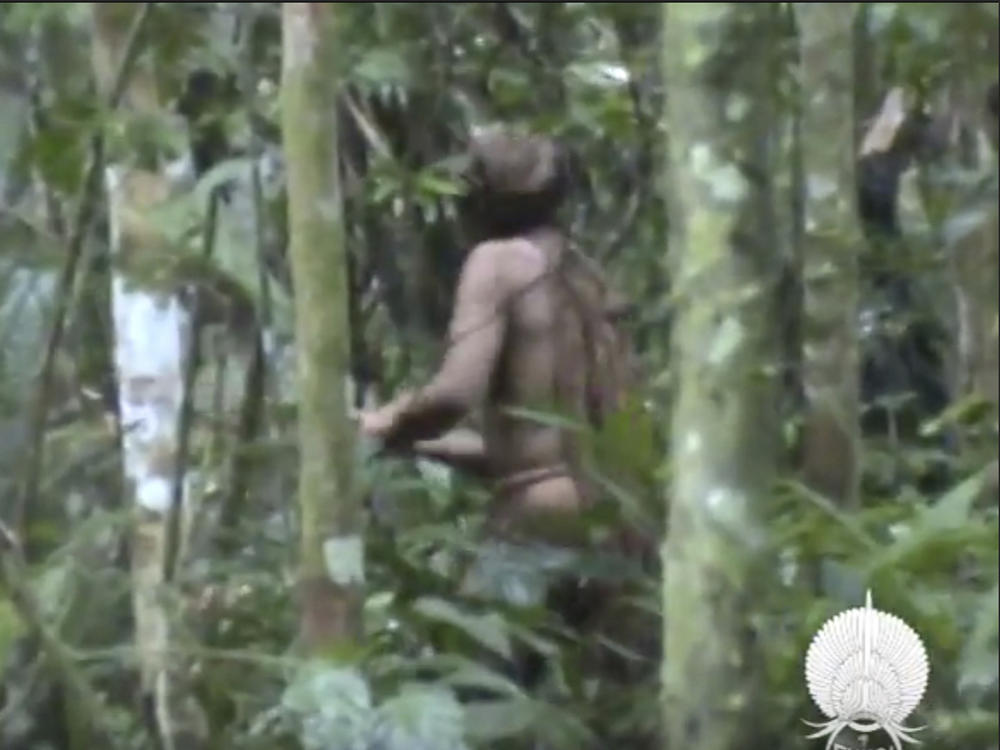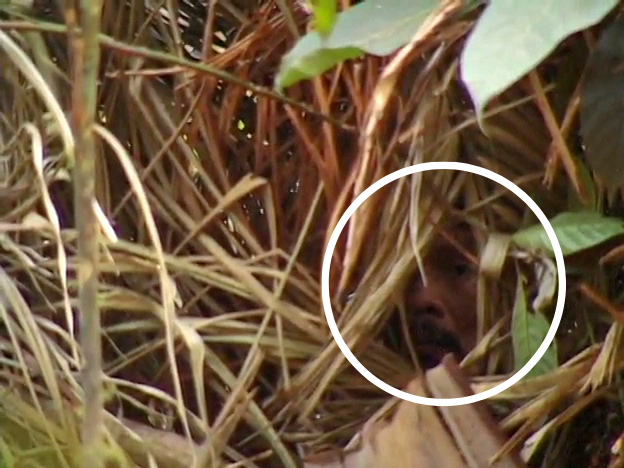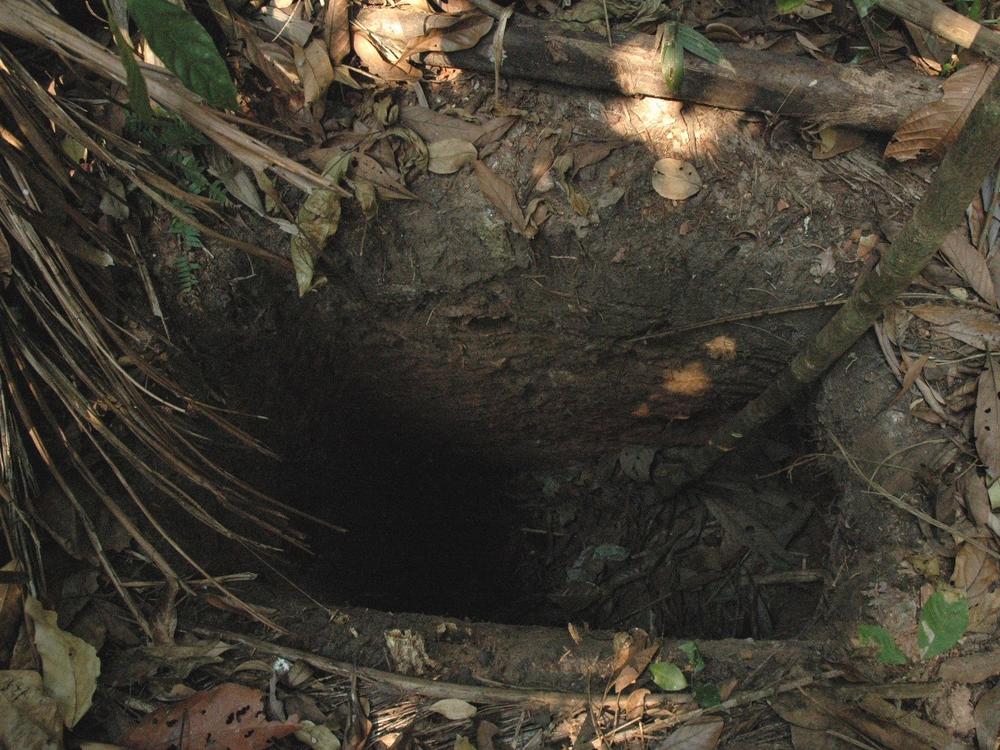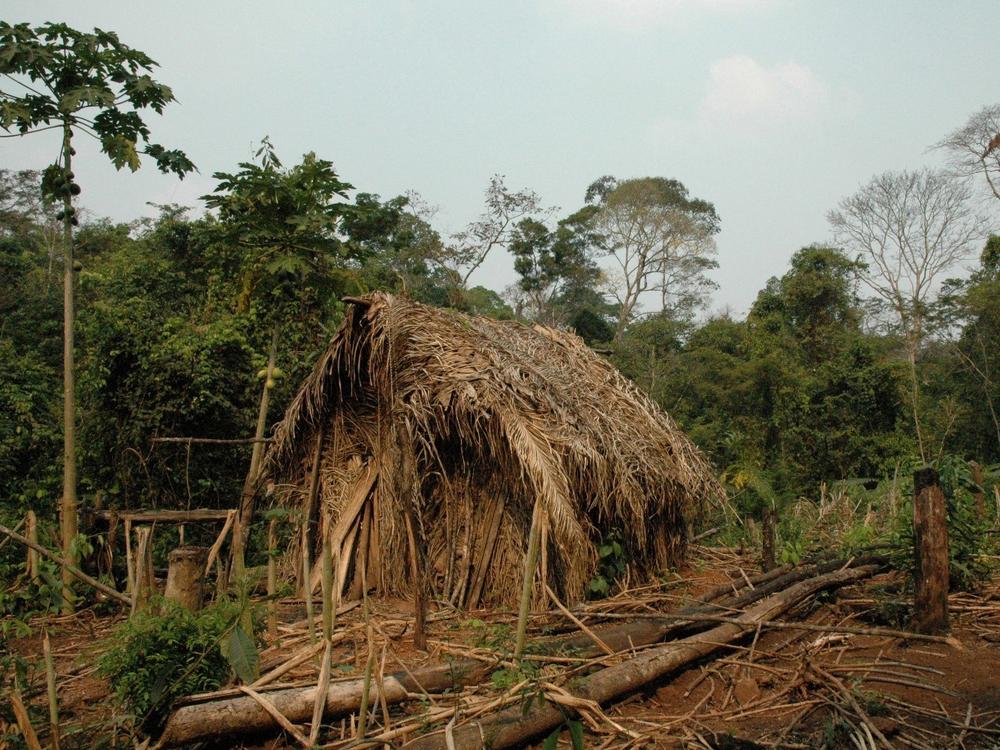Section Branding
Header Content
The last member of a tribe in Brazil has died, pulling Indigenous rights into focus
Primary Content
The last member of a besieged Indigenous tribe in Brazil has died, apparently of natural causes. Activists are holding up his legacy as a symbol of both the genocide and resilience of his people, calling for his land to be preserved as a reminder of both.
Little is known about the man, whose death was announced over the weekend by Funai, Brazil's federal agency for Indigenous affairs. He was the only inhabitant of the Tanaru Indigenous Territory in the western Amazon state of Rondonia.
His ethnicity, language and name remain a mystery. But his singularity — and decades of isolation — did gain him some broader recognition in and beyond Brazil. He earned the nickname "The Man of the Hole" because of the deep ditches he would dig (sometimes with sharp stakes inside), and could be seen chopping a tree with an ax-like tool in a video captured by a government team in 2018.
The rest of his tribe was likely massacred in attacks by gunmen hired by colonists and ranchers dating back to the 1970s, according to Survival International, a London-based human rights organization that advocates for Indigenous and uncontacted people. He had since resisted all attempts at contact and "made clear he just wanted to be left alone," Fiona Watson, Survival's research and advocacy director, said in a statement.
"No outsider knew this man's name, or even very much about his tribe — and with his death the genocide of his people is complete," Watson added. "For this was indeed a genocide — the deliberate wiping out of an entire people by cattle ranchers hungry for land and wealth."
Funai believes the man died of natural causes and has ordered a federal medical examiner's report to confirm that.
The man lived an isolated, nomadic life
His body was found in a hammock inside his hut last Tuesday during a round of federal monitoring and territorial surveillance, the agency added. There were no signs of violence or struggle, nor any indications that others had been at the site or in the nearby woods.
The Guardian reports that a Funai official who monitored the man's well-being from afar found his body in a state of decomposition with colorful feathers placed around it — possibly indicating that the man had prepared for death. The official estimated his age to be around 60.
Dozens of abandoned campsites suggest that the man had moved around over the years. Funai said that the hut he was found in was the 53rd of those it had tracked over the last 26 years. It was architecturally similar to those before it, made of straw and thatch, and featuring a single door and an indoor version of the holes he was known for digging.
The holes were likely there for protection in case of an attack, according to Survival International. The nonprofit also said the man planted corn, manioc, papayas and bananas, in addition to catching animals with his stake traps.
Funai first became aware of the man's existence in the 1990s after discovering evidence of destroyed plots of farmed land as well as dwellings apparently dragged away by tractors. The agency fenced off an area for the man to live undisturbed, and later formally created the Tanaru reserve in 2007.
Tanaru territory "stands as a small island of forest in a sea of vast cattle ranches, in one of the most violent regions in Brazil," according to Survival. In 2009, the man survived an attack by gunmen — which Survival attributes to ranchers in the area, who were opposed to government efforts to protect that land.
Indigenous rights are on the ballot in Brazil
In the wake of the man's death, environmental activists are calling for the reserve to be permanently preserved as a memorial to Indigenous genocide.
One of those groups is the Observatory for the Human Rights of Uncontacted and Recently Contacted Peoples (OPI). In a statement, it also called for the man's body to be respected and returned swiftly to the Indigenous territory, and for the land to remain closed until archaeological and anthropological studies can be carried out.
The nearly 20,000-acre reserve is one of seven Brazilian territories protected by Land Protection Orders, which President Jair Bolsonaro has long campaigned to abolish. Bolsonaro, who is up for reelection in October, maintains that Indigenous Brazilians have ownership over too much land.
Human Rights Watch (HRW) said earlier this month that the Brazilian government has adopted policies that "seriously threaten" the rights of Indigenous people.
Invasions and illegal extraction of natural resources in Brazil's protected Indigenous lands have tripled since Bolsonaro took office in 2019, according to a report released over the weekend by the Indigenous Missionary Council (CIMI). The Christian advocacy group said 305 such incidents took place in 2021, compared to 109 in 2018.
It's against this backdrop that a record 181 candidates who identify as Indigenous are campaigning in Brazil's upcoming elections, and Bolsonaro's main opponent, former left-wing President Luiz Inacio Lula da Silva has vowed to stop illegal mining on Indigenous lands if elected.
Watson, with Survival International, explicitly connected the man's death to the Bolsonaro government's policies in her statement on Sunday, in which she warned that other Indigenous tribes remain very much at risk:
"If President Bolsonaro and his agribusiness allies get their way, this story will be repeated over and over again until all the country's Indigenous peoples are wiped out."
Copyright 2022 NPR. To see more, visit https://www.npr.org.




